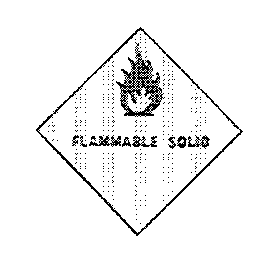SCHEDULE 3Classification of and hazard warning signs for substances (including preparations) dangerous for carriage
PART ITABLE OF CHARACTERISTIC PROPERTIES, CLASSIFICATION AND HAZARD WARNING SIGNS
Column 1 | Column 2 | Column 3 |
|---|---|---|
Characteristic properties of the substance | Classification and category of danger | Hazard warning sign |
A substance which—
other than a toxic gas or a flammable gas. | Non-flammable compressed gas. | |
A substance which has a critical temperature below 50°C or which at 50°C has a vapour pressure of more than 3 bars absolute and which is toxic. | Toxic gas. | |
A substance which has a critical temperature below 50°C or which at 50°C has a vapour pressure of more than 3 bars absolute and is flammable. (See Note 1) | Flammable gas. | |
A liquid with a flash point of 55°C or below except a liquid which—
(See Notes 1 and 2) | Flammable liquid. | |
A solid which is readily combustible under conditions encountered in carriage or which may cause or contribute to fire through friction. | Flammable solid. | |
A substance which is liable to spontaneous heating under conditions encountered in carriage or to heating in contact with air being then liable to catch fire. | Spontaneously combustible substance. | |
A substance which in contact with water is liable to become spontaneously combustible or to give off a flammable gas. | Substance which in contact with water emits flammable gas | |
A substance other than an organic peroxide which, although not necessarily combustible, may by yielding oxygen or by a similar process cause or contribute to the combustion of other material. | Oxidizing substance | |
A substance which is—
| Organic peroxide | |
A substance known to be so toxic to man as to afford a hazard to health during carriage or which, in the absence of adequate data on human toxicity, is presumed to be toxic to man. | Toxic substance. | |
A substance known to be toxic to man or, in the absence of adequate data on human toxicity, is presumed to be toxic to man but which is unlikely to afford a serious acute hazard to health during carriage. | Harmful substance. | |
A substance which by chemical action will—
| Corrosive substance. | |
A substance which is listed in Part 2 of the approved carriage list and which may create a risk to the health or safety of persons in the conditions encountered in carriage whether or not it has any of the characteristic properties referred to above. | Other dangerous substance. | |
Packages containing two or more dangerous substances which have different characteristic properties. | Mixed hazards. | |
| ||













